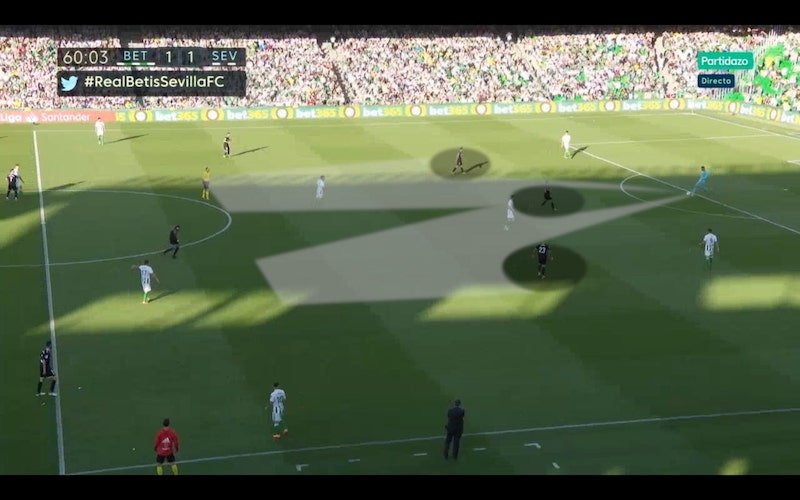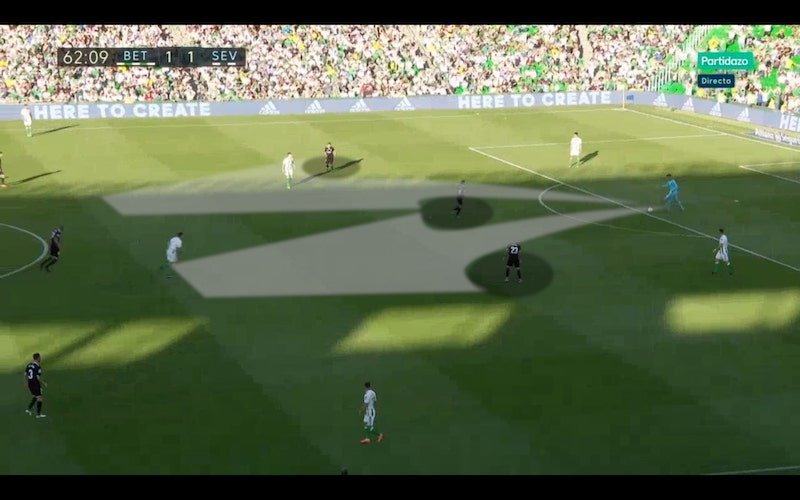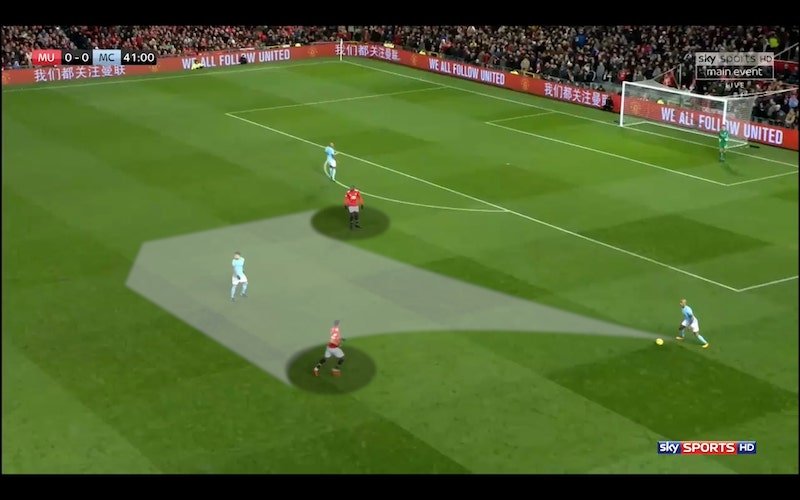Complex Build-Ups Lead to Simple Football
“Positional Play consists of generating superiorities out of the defensive line against those who are pressing you. Everything is much easier when the first progression of the ball is clean.”
In his 2002 book, The Hidden Connections, physicist and systems theorist, Fritjof Capra states, “No individual organism can exist in isolation. Animals depend on the photosynthesis of plants for energy needs; plants depend on the carbon dioxide produced by animals, as well as the nitrogen fixed by the bacteria at their roots; and together plants, animals, and microorganisms regulate the entire biosphere and maintain the conditions conducive to life.”
This is where we will start when discussing a successful build-up. This is the perfect starting point because Capra makes two statements here which describe football perfectly:
No individual organism can exist in isolation.
Together plants, animals and microorganisms (individual parts of the system) regulate the entire biosphere and maintain the conditions conducive to life.
At the end of the day, natural biospheres and football have something in common; complexity. They are both complex systems that are made up of individual parts which when interacting with one another sustain the system and ideally something new emerges from the system.
And again, both in football and in natural biospheres, these systems should not be broken down and simplified into their individual parts because this will lead to the collapse of the system. Rather, if we want to understand the complex nature of these systems we have to see the whole picture, and if we want to interact and manipulate these systems, we have to manage the complexity.
Football’s Complexity
As discussed, in football complexity needs to be managed, not simplified. Creating principles to help your players make decisions within the system. Ideally, all decisions by all participants are made based on the team’s tactic thus creating team communication which results in a solution to manage the complexity of football.
And by managing complexity, we are managing our probability of success. As Chris Bentley from Colorado Rapids Youth Soccer Club states, "Playing football requires managing as much “chance” as possible... If you can play in a way that manages chance better, you increase your odds of winning. So, thoughtlessly playing forward is not doing that no matter what way you look at it.”
Building an attack from the back can seem risky to some. But I believe when framed in a way of probability, it makes more sense than the alternative of purposelessly playing the ball forward.
Without this process, each player independently approaches complexity. In doing so, the solutions decided upon for each game situation results in changing the game in different ways causing the complexity to increase. Our goal as the manager of a team is managing the complexity of the game through principles and tactics. Through this structure, players have the liberty to express themselves, like dancers.
The Build-Up
Due to the nature of the game, in one’s own half of the field, you are more likely to have a numerical superiority. This means that if the structure is implemented correctly you should have more players available to advance up the pitch. This is only true when correct angles and distances are used. Additionally, the fewer players you require to build an attack from the back, the more advantages you will have when the ball arrives in more advanced positions.
It’s easy to overlook the purpose of building a positionally advantageous attack from the back. As many football philosophers have pointed out over the years, a well developed organised attack leads to tactical advantages when you are nearer to goal (better chances/probability of scoring). The purpose is to get the ball to attacking players in favourable conditions to finalise actions successfully.
It’s very different for a player to receive the ball with their back to the opposing goal and being closed down by several defenders (low probability) than receiving the ball facing forward inside the opponent’s penalty area with time and space to shoot (high probability). However, this cannot happen without rationally occupying the desired spaces. Like every successful endeavour, it requires a thoughtful process.
(If you are interested in further information on shot probability, check out this article here via StatsBomb)
Once we have addressed the importance of the structure in terms of what it can offer, we have to zoom in and address the objective at each line. If ultimately, we want to give our more advanced players better conditions to receive the ball, then prior to that we need to play through opposing lines (ie. front two or three, midfield line, back line).
As previously mentioned, the first line of pressure typically has fewer numbers. In a standard 1-4-4-2, which could be varied in different ways, teams will press with the front two and usually add a third player to the initial press. Which leaves a line of three to beat.
When the opposing teams uses a 1-4-2-3-1 or a 1-4-3-3, they will initially press with three players with cover behind. This again has likely a line of three to beat.
As you have hopefully noticed, the structure which our team utilises is entirely dependent on the the system the opposing team defends in. Our structure should fill the spaces the opposing team leaves empty. Think of it as a puzzle which is always changing. We have to figure which piece best fits into the piece the opposing team has put out. To add to more complexity to this puzzle, we can manipulate the opposing puzzle piece by certain movements of players or the ball to change their puzzle piece thus creating new spaces to be occupied.
Positional Play Decisions
As the name implies, Positional Play uses game references to positionally create advantages to achieve success. Decisions are entirely based on game references (the ball, space, the opponent and teammates). These variables are the starting points to our decisions, thus signifying the importance of having these references in training environments. They implicitly give players instructions on how to move through the mind maze of the game. They speak to players but only if players know what they are listening for. Correct positional play decisions require learning how to read maps collectively.
As you can imagine, this is not an easy process to have success with. Football is a player-centred sport which means the manager has minimal influence during the match. On top of that, players have to make decisions on continually moving reference points (ball, teammates, opposing players, etc.) which creates new spaces to identify. This means training methodology should reflect the player-centred nature of the game.
In July of 2019, Pep Guardiola granted Gol TV a 90-minute interview. Over the course of the interview, the four interviewers didn’t hold back on any topic or concept. They asked him specifics about his methodology, training, tactics, game approach, personal life, and public life. Nothing was held back. Needless to say, Guardiola delivered with some incredible insight regarding football.
At one point in the interview, the topic of positional play emerges. He is asked what is necessary of a positional play game model to which he replies, “In football, you need everything. In positional play, you need physically strong players, players who make runs without the ball, from inside and out, wingers who make runs in space, players who dribble in the middle and the wings, players who can defend 40 meters, players who can read based on who steps who is the free man.”
This statement shows that Positional Play is in the smallest details of positioning and re-positioning but we mustn’t forget that it requires an abundance of competent and proficient players in every position. All of whom are providing a certain role and responsibility in order for the team to have success. This is the zoomed-out view of positional play we need before we zoom into the minute details necessary to be successful.
In the second part of his answer, he zooms in further to define the decisions required of the players. He states, “Playing good football … is based on the opponent’s movement you make a decision. If I’m the centre-back, the winger steps to me, the free man is the wingback. That ball has to get to the wingback. Don’t ask me how, but it has to get there. If I’m the centre-back and the striker steps to me, the other centre-back is free. The ball has to go to the other centre-back… If the centre-back has the ball and the attacking midfielder steps, the defensive midfielder is free. That ball has to go there. These processes are positional play; to be in position based on who steps you make a decision, and from there you play.”
Invite Pressure
When discussing how to create a successful build-up from the back, this is the first step. Guardiola directly states what is necessary; pressure from the opponent.
Juan Carlos Osorio, current Atletico Nacional manager, previously Mexican National team manager, said, “An opponent's high pressure or press is an ally, not an enemy”.
Thinking of this logically, when teams press high there is more space (time) in front of the goal which leads to better opportunities. Lure out the defender by building an attack from the back, thus leaving more space in behind to exploit. Again, following this logic when there is more space near and around the goal, the probability of scoring increases, and at the end of the day playing football well is all about increasing your probability to win, as previously discussed.
We want to invite pressure. We want defenders to jump out of position to attempt to win the ball back from us because when they do so, we exploit the gaps they’ve left. We exploit their disorganisation. We exploit their momentary chaos. Because it’s exactly that, momentary. It’s fleeting. It’s an open gap for a certain amount of time. For the best teams, it’s fractions of a second.
“You pass the ball because they'll jump and when they jump the space is here [behind].”- Pep Guardiola
We want players to jump. And by jump, Pep is using the literal translation from Catalan which means ‘step towards’. He is referring to a defender committing themselves towards the attacker with the intention of recovering the ball. ‘Jumping’ is crucial.
Examples
As we look at some examples, let’s focus on some things in particular:
Numerical superiority in the defensive third.
Positioning and re-positioning based on reference points (ball, teammates, opponent, and space).
Occupation of gaps in the opponent’s structure.
Move the ball to move the opponent horizontally.
Invite pressure to stretch the opponent vertically.
Execute in the momentary window of time.
Please take a few minutes to watch all of the examples below. Notice they are all different in their approach, yet they all require the same conditions to be successful.
As one you can see in every single one of these successful build-ups, every player must be contributing in a direct or indirect way.
OBSERVE THE WHOLE SYSTEM
We began this analysis of successful build-ups with a view into the natural world’s complex systems and what they can teach us. We’ll finish with another lesson from the natural world.
The Biggest Little Farm is a 2019 documentary that tells the story of a couple who start a farm with an ambitious goal; to emulate how natural ecosystems work by regulating themselves through diversity. Essentially by creating a farm with enough ecological diversity, it could reach a point where it was self-sustaining.
The film depicts the daily hardships that the owners of the farm, John and Molly Chester, face over the course of eight years. There are countless struggles the couple have to overcome to achieve their ultimate goal of a self-sustained farming ecosystem. The farmers are repeatedly required to figure out solutions to urgent, everyday problems, such as how to stop snails from infesting their lemon trees, how to keep coyotes from killing their ducks without having to kill the coyotes, too, how to get an orphaned lamb to adulthood without having to put it down prematurely. There seems with every solution comes a new problem with no avail.
At the 48 minute mark of the film, John explains a new problem on the farm and he reveals the key for success, “Everything on the farm must contribute.” Every excess of one part of the farm must be used for a different purpose, and sometimes, it’s not easy to figure out how to do that.
John learns the power of observation from his dog Todd, “I feel like Todd is constantly staring deeply at these almost infinitesimal details. Like he’s decoding how the world around him works. So I’ve started doing the same, and I think I’ve figured out what ducks love more than ponds…. With every new problem that pops up, first take a step back and watch it. Observation followed by creativity is our greatest ally.”
So similarly, we must observe the micro-ecosystem that occurs within our pitches. Observe each moving part and how that part makes the team succeed. Be vigilant over the infinitesimal details that can be overlooked, because here is where we can find success. Zoom out to see that everything is connected and there aren’t actions, only interactions. Only by observing the whole system from afar will we see the intended and unintended consequences of every interaction. And once observed, we can creatively approach all problems to achieve managed simplicity.
“For any problem, the more you can zoom out and embrace complexity, the better chance you have of zooming in on the simple details that matter most.”





